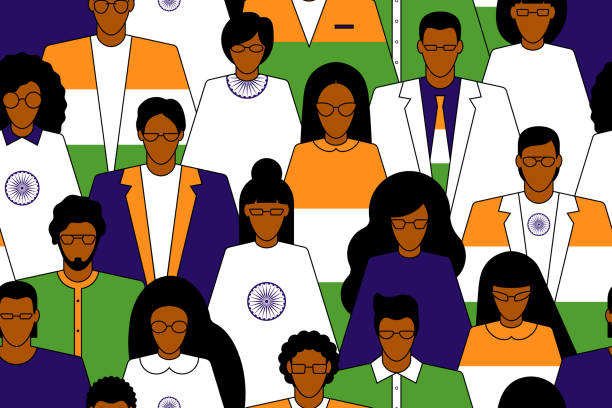Disguised unemployment is a pervasive yet often overlooked economic phenomenon that significantly impacts economies worldwide. This type of unemployment occurs when more workers are employed than necessary, resulting in reduced productivity. Understanding disguised unemployment is crucial for devising effective economic policies and fostering sustainable development. This blog post will delve into the various aspects of disguised unemployment, including its causes, impacts, and potential solutions, supported by insights from various reports and indexes.

In This Post
ToggleWhat is Disguised Unemployment?
Disguised unemployment refers to a situation where more people are employed in a job than are actually needed. These extra workers do not contribute to an increase in output, meaning their labor is effectively redundant. Unlike open unemployment, where individuals are actively seeking work, disguised unemployment is hidden as people appear to be employed. It is prevalent in sectors like agriculture and informal industries in developing countries.
To better understand disguised unemployment, it’s essential to differentiate it from other types of unemployment:
- Structural Unemployment: Caused by shifts in the economy that create a mismatch between skills and job opportunities.
- Frictional Unemployment: Short-term unemployment occurring when individuals are between jobs.
- Cyclical Unemployment: Linked to the economic cycle, rising during recessions and falling during expansions.
Real-life examples of disguised unemployment include a small farm with ten family members working when only five are needed to achieve the same output. This scenario highlights the inefficiency and economic waste associated with disguised unemployment.

Causes of Disguised Unemployment
Overstaffing in Agriculture
In many developing countries, agriculture is a primary source of employment. However, technological advancements and improved farming techniques mean fewer workers are needed to produce the same amount of agricultural output. Despite this, many families continue to employ all available members in agricultural work, leading to disguised unemployment.
Lack of Industrialization
Inadequate industrial growth limits the creation of new jobs outside agriculture. Without sufficient industrial development, excess labor remains stuck in low-productivity sectors, exacerbating disguised unemployment.
Economic Structure
The economic structures of developing nations often rely heavily on agriculture and informal sectors, where disguised unemployment is most prevalent. Limited diversification and dependence on a few industries can lead to labor saturation and inefficiency.
Technological Factors
While technology can enhance productivity, it can also contribute to disguised unemployment by displacing workers who lack the skills to transition to new roles. In some cases, businesses may retain more workers than needed due to technological redundancies.

Measuring Disguised Unemployment
Measuring disguised unemployment is challenging due to its hidden nature. However, several indicators and metrics can provide insights:
Indicators and Metrics
Common indicators include the employment rate, productivity levels, and sectoral labor force distribution. Low productivity despite high employment often signals disguised unemployment
Reports and Indexes
Reports from organizations like the International Labour Organization (ILO), World Bank, and national statistical agencies offer valuable data. For instance, the ILO’s “World Employment and Social Outlook” provides insights into labor market trends and disguised unemployment rates.
Case Studies
Case studies from countries like India and China, which have significant agricultural sectors, illustrate how disguised unemployment manifests and its economic impact. For example, India’s National Sample Survey Office (NSSO) provides data showing high levels of disguised unemployment in rural areas.

Impacts of Disguised Unemployment
Economic Impact
Disguised unemployment leads to low productivity, hindering economic growth. When workers do not contribute effectively to output, it results in economic inefficiency and wasted resources. This situation can stifle GDP growth , decreasing GST collection and limit a country’s economic potential.
Social Impact
The social implications include increased poverty and inequality. Families with many members working in low-productivity jobs struggle to improve their living standards, perpetuating cycles of poverty. Inequality rises as a result of uneven access to productive employment opportunities.
Disguised Unemployment in Different Sectors
Agriculture
In agriculture, disguised unemployment is widespread due to traditional farming practices and lack of mechanization. Many family members work on small farms without significantly contributing to productivity, creating an illusion of employment.
Service Sector
The service sector also experiences disguised unemployment, particularly in informal jobs with low productivity. For instance, street vendors and small shop owners may have more workers than necessary, diluting individual contributions.
Manufacturing
In manufacturing, disguised unemployment can occur in labor-intensive industries where technological advancements are slow. Overstaffing due to outdated practices and resistance to modernization can lead to inefficient labor use.

Global Perspectives on Disguised Unemployment
Developed vs. Developing Countries
In developed nations, disguised unemployment is less common due to advanced industrialization and technological integration. However, it still exists in certain sectors. In contrast, developing countries face higher levels of disguised unemployment due to reliance on agriculture and informal sectors.Regional
Regional Analysis
Regions like South Asia, Sub-Saharan Africa, and Latin America exhibit high levels of disguised unemployment. In South Asia, traditional agricultural practices and population pressure contribute to the issue. Sub-Saharan Africa faces similar challenges, exacerbated by limited industrial growth. Latin America struggles with informal employment and underutilization of labor.
Policy Responses
Various policy responses have been implemented to tackle disguised unemployment. These include economic diversification, promoting industrial growth, and improving educational systems to align with labor market needs. Effectiveness varies, with some policies yielding better results than others.
Differences Between Disguised, Open, and Seasonal Unemployment
Open Unemployment
Open unemployment occurs when individuals are actively seeking work but cannot find employment. This type of unemployment is visible and easily measurable through labor force surveys and unemployment rates. Unlike disguised unemployment, where individuals appear employed but are underutilized, open unemployment directly reflects a lack of job opportunities.
Seasonal Unemployment
Seasonal unemployment is temporary and linked to specific periods or seasons. For example, agricultural workers may be unemployed during off-season periods when farming activities are minimal. This type of unemployment is sector-specific and predictable, unlike disguised unemployment, which is persistent and widespread across various sectors.

Solutions to Disguised Unemployment
Policy Recommendations
Governments should implement policies promoting economic diversification, encouraging investment in high-productivity sectors, and supporting small and medium enterprises (SMEs). These measures can create more job opportunities and reduce labor redundancy.
Education and Training
Enhancing education and vocational training is crucial. Aligning educational curricula with labor market demands ensures that individuals acquire relevant skills. Vocational training programs can help workers transition to new roles, reducing disguised unemployment.
Economic Diversification
Diversifying the economy is essential to reducing reliance on agriculture and informal sectors. Developing industries like manufacturing, technology, and services can absorb excess labor and improve productivity.
Technological Integration
Adopting advanced technologies can enhance productivity and reduce the need for excessive labor. However, it is important to provide training and support to workers transitioning to technology-driven roles to prevent further unemployment.

Conclusion
Summarizing the key points reinforces the importance of addressing disguised unemployment:Disguised unemployment poses significant challenges to economic growth and social well-being. By understanding its causes, measuring its extent, and implementing effective solutions, countries can enhance productivity and improve living standards. Comprehensive policies, education and training, economic diversification, and technological integration are crucial steps towards reducing disguised unemployment.
FAQ's
Disguised unemployment occurs when more workers are employed than necessary, leading to reduced productivity.
Indicators include employment rates, productivity levels, and sectoral labor force distribution. Reports from organizations like the ILO and World Bank provide insights.
Causes include overstaffing in agriculture, lack of industrialization, economic structure, technological factors, and education and skill mismatch.
Disguised unemployment involves excess workers not contributing to productivity, open unemployment refers to individuals actively seeking work but unable to find it, and seasonal unemployment is temporary, linked to specific periods or seasons.
Solutions include policy recommendations, enhancing education and vocational training, economic diversification, and technological integration.
Examples include India’s MGNREGA program, China’s industrialization efforts, and economic reforms in Brazil and Vietnam.
Future trends indicate a shift towards technological integration, digitalization, and sustainable practices, along with global initiatives to promote inclusive development and decent work.
Reference
1. International Labour Organization (ILO) – “World Employment and Social Outlook” Reports:– [World Employment and Social Outlook]
2. World Bank – “World Development Report”:
– [World Development Report]
3. National Sample Survey Office (NSSO) – Employment Reports
4. Mahatma Gandhi National Rural Employment Guarantee Act (MGNREGA) – Official Website:
– [MGNREGA]
5. United Nations Sustainable Development Goals (SDGs):- [Sustainable Development Goals]

